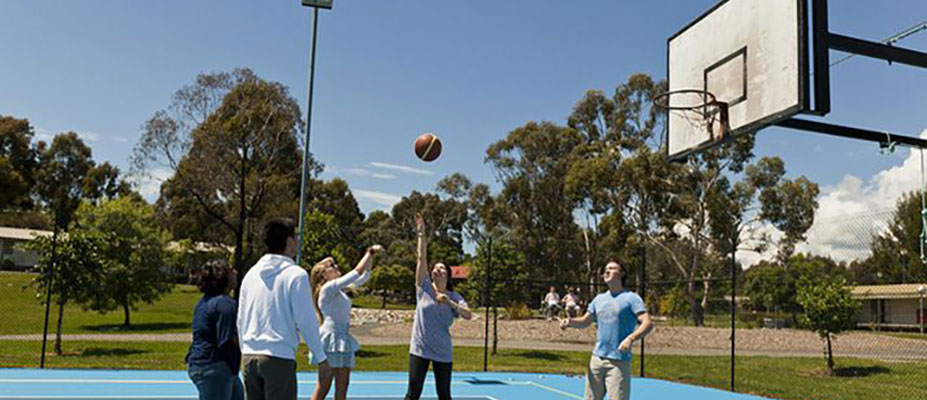

Spatial Epidemiological Investigation of Sport and Leisure Injuries in Victoria, Australia
PhD: Himalaya Singh
Supervisors: Prof Caroline Finch, Prof Helen Thompson, Dr Lauren Fortington and Assoc Prof Rochelle Eime
Thesis: Spatial epidemiological investigation of sport and leisure injuries in Victoria, Australia ![]()
Year commenced: 2013
Year completed: 2018
Abstract
Sport and leisure injuries are recognised as a public health issue in Australia. Despite the many health benefits associated with sport and leisure participation, there is a risk of sustaining injury during participation. To keep Australia active, there is a critical need to prevent injury occurrence.
Epidemiological investigations in sport and leisure injuries have been largely examined by grouping of sports, age groups, sex and level of play. In addition, intrinsic (person-level) factors have been considered, such as strength, flexibility or previous injury history. These factors may not be sufficient to identify injury burden or prevent an increase in injury incidences. In the broader injury literature (e.g., road traffic crashes or drowning), it is known that injuries often cluster within specific places (i.e., road intersections or bodies of water). These specific geographic locations may also relate to sport and leisure injuries (e.g., sports grounds or facilities). Similarly, population-level factors such as socio-economic status or cultural groups within an area could influence the types of sports and leisure activities people participate in and consequently, the injuries that occur.
A review presented in this PhD thesis revealed that there is very limited sport and leisure injury epidemiological information from a geographical perspective. To address this gap and determine whether there is a spatial pattern in sport/leisure injuries, the aim of this PhD was to examine the geospatial distribution of sport/leisure injury hospitalisations and their association with a broad range of social and economic characteristics. This thesis uses spatial epidemiological methods to answer questions such as ‘Where do sports and leisure injuries occur?’ and ‘In whom do sports/leisure injuries occur?’ The main chapters present the results of the application of spatial epidemiological methods to describe the problem, to test hypotheses and to explore associations with possible explanatory variables. The findings showed a significant variation across metropolitan, regional and rural areas in the pattern and clustering of injuries when examining different sports, age groups and other variables such as education level.
A secondary aim of this thesis was to consider the dissemination of sport and injury epidemiological data. As emphasised in the literature, there is limited spatial epidemiological information available to decision-makers and key stakeholders. At best, descriptive maps iii might be included in a report or research paper. However, these are static and limited to the results that the author chooses to present. Therefore, an important output from this PhD is a web-GIS application that has been specifically built to enable the exploratory analysis of sport/leisure injuries in Victoria.
Sport and leisure injury prevention strategies and policy development relies on information about where, when, to whom and how sport/leisure injuries occur. This thesis demonstrates that a spatial epidemiological approach is an important and novel way to address epidemiological questions from a geographical perspective.
Thesis: Spatial epidemiological investigation of sport and leisure injuries in Victoria, Australia ![]()
-
RESEARCH OUTPUT
Singh, H., Fortington L.V., Thompson, H. and Finch, C.F. An overview of geospatial methods used in unintentional injury epidemiology. Injury epidemiology. 2016. 3(1):32.
Singh, H., Fortington, L.V., Eime, R., Thompson, H. and Finch, C.F. Spatial epidemiology: A new approach for understanding and preventing sport injuries [online]. Australasian Epidemiologist, Vol. 22, No. 1, Aug 2015: 32-34.
Availability: http://search.informit.com.au/documentSummary;dn=464207343371268;res=IELHEA
ISSN: 1327-8835.Applications of geospatial methods in injury and trauma data analysis: A systematic review, Safety 2016, Tampere Finland, September 2016.
Geographical variation of sports and leisure injury hospitalisation data of Victoria, Australia, Safety 2016, Tampere Finland, September 2016.
Applications of geospatial methods in injury and trauma data analysis: A systematic review. Australasian Injury Prevention and Safety Promotion Conference, Sydney, November 2015.
Spatial epidemiology: A new approach for understanding and preventing sport injuries. ACRISP Research Retreat and Conference, Hepburn Springs, June 2015.
Spatial epidemiology of sports and recreational injuries. Federation University Research Conference, Ballarat, November 2014.
-
RESOURCES
-
PARTNERS


